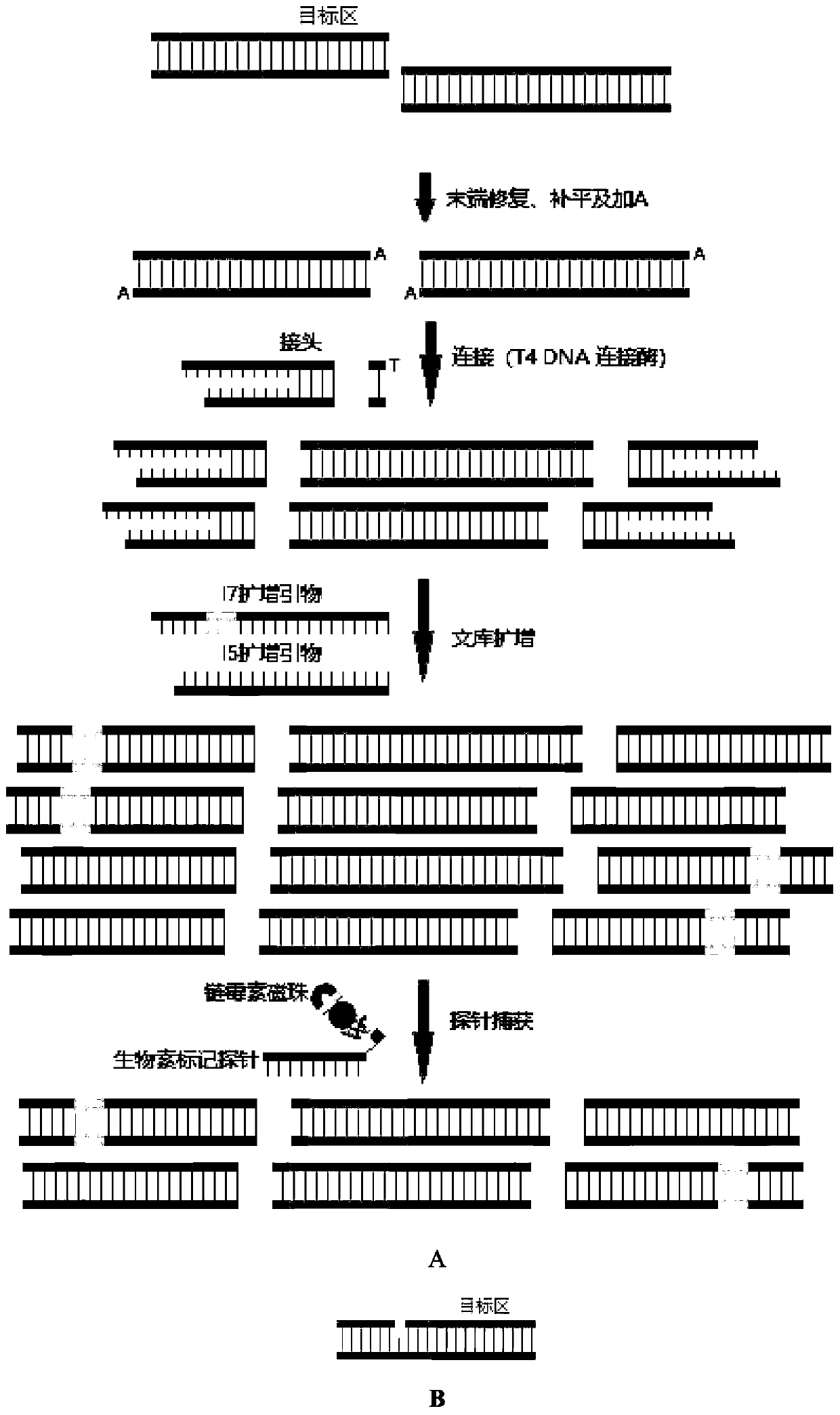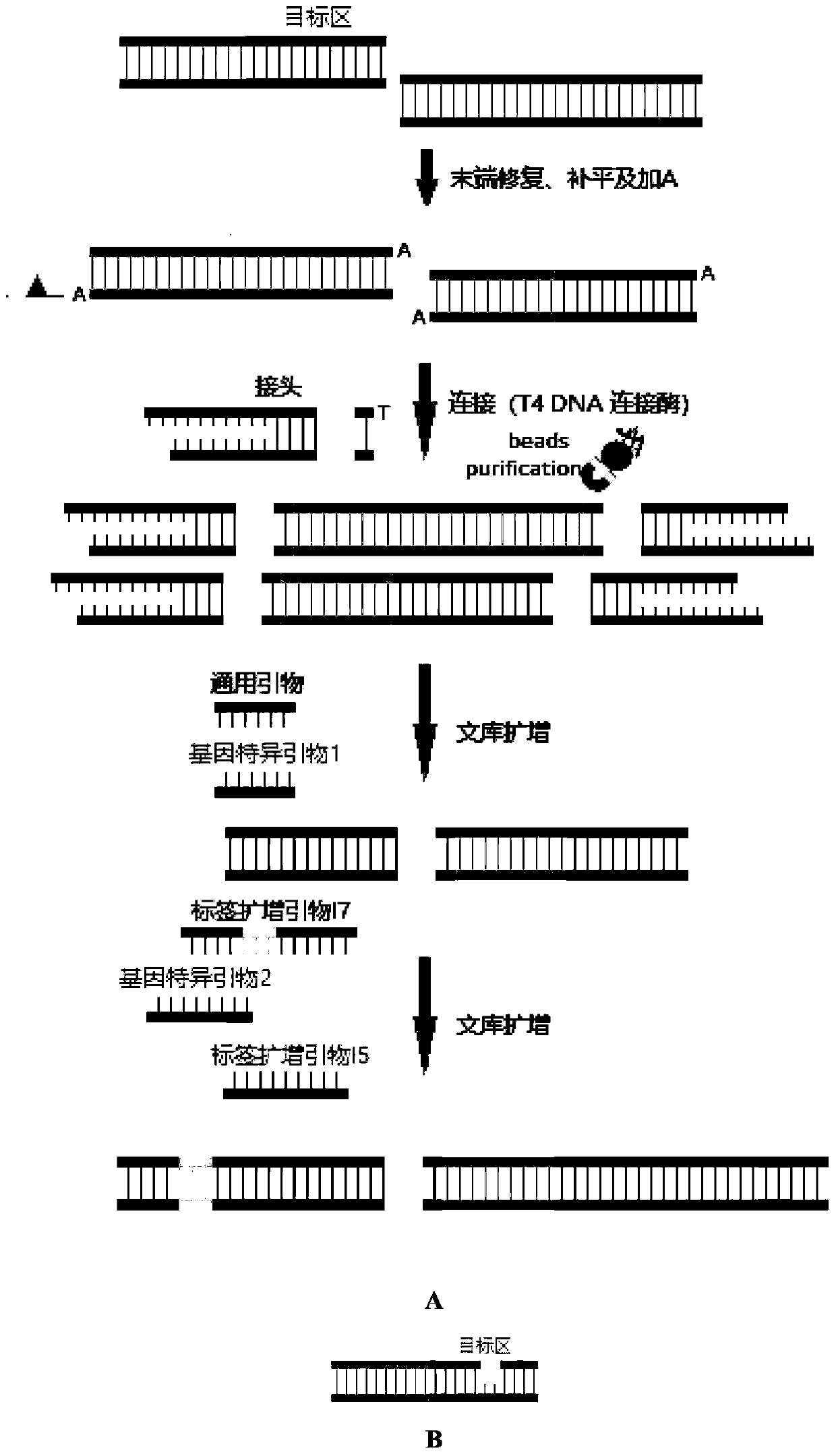Library building method based on high-throughput sequencing
A high-throughput, sequencing technology, applied in the field of library construction based on high-throughput sequencing, can solve problems such as complex processes, complex operations, and greater impact on the capture efficiency of target products, achieving good connection effects and ensuring specificity
- Summary
- Abstract
- Description
- Claims
- Application Information
AI Technical Summary
Problems solved by technology
Method used
Image
Examples
Embodiment 1
[0052] 1. Prepare fragmented nucleotide samples.
[0053] 1. Genomic DNA sample:
[0054] (1) Open the M220 Focused-ultrasonicator (Covaris) and supporting software, put the Tube holderInsert into the water bath, and put the matching M220 holder XTU Insert microTUBE130μL ultrasonic tube loading sheet on it. Add about 15mL of ultrapure water until the surface of the Tube holder is submerged, and cover the safety cap until the water level indicator turns green, ready for use.
[0055] (2) Run the ultrasonic interruption program according to the following conditions.
[0056] Table 1 Instrument condition settings for ultrasonic crushing of genomic DNA samples
[0057] name condition Duty Factor 20% Peak 50 Cycle Burst 200 Volume 130μL Time 180s
[0058] (3) Transfer 125 μL of the interrupted product in step (1) to a 1.5 mL centrifuge tube, and add 250 μL AMPure XP Beads to the centrifuge tube, vortex and mix well, and incubate at ...
Embodiment 2
[0143] In order to illustrate that this library construction method can effectively carry out library construction and obtain high-throughput sequencing data enriched in target regions, the target regions (5860 bp in total) as shown in Table 4 below were selected for single-end nested multiplex PCR primer design and Synthesized to obtain the first gene-specific primers and the second gene-specific primers, a total of 77 pairs.
[0144] Table 4 Target region data of high-throughput sequencing
[0145]
[0146]
[0147] According to the specific operation steps in the above-mentioned Example 1, the nucleotide samples in the target region in Table 2 were constructed, and the results are as follows:
[0148] (1) The Agilent 2100 bioanalyzer system detects the size and distribution characteristics of nucleotide sample fragments for details. Image 6 As shown, the main peak size of the nucleotide sample fragment in this figure is 180bp.
[0149] (2) The size and distribution...
PUM
 Login to View More
Login to View More Abstract
Description
Claims
Application Information
 Login to View More
Login to View More - R&D
- Intellectual Property
- Life Sciences
- Materials
- Tech Scout
- Unparalleled Data Quality
- Higher Quality Content
- 60% Fewer Hallucinations
Browse by: Latest US Patents, China's latest patents, Technical Efficacy Thesaurus, Application Domain, Technology Topic, Popular Technical Reports.
© 2025 PatSnap. All rights reserved.Legal|Privacy policy|Modern Slavery Act Transparency Statement|Sitemap|About US| Contact US: help@patsnap.com



